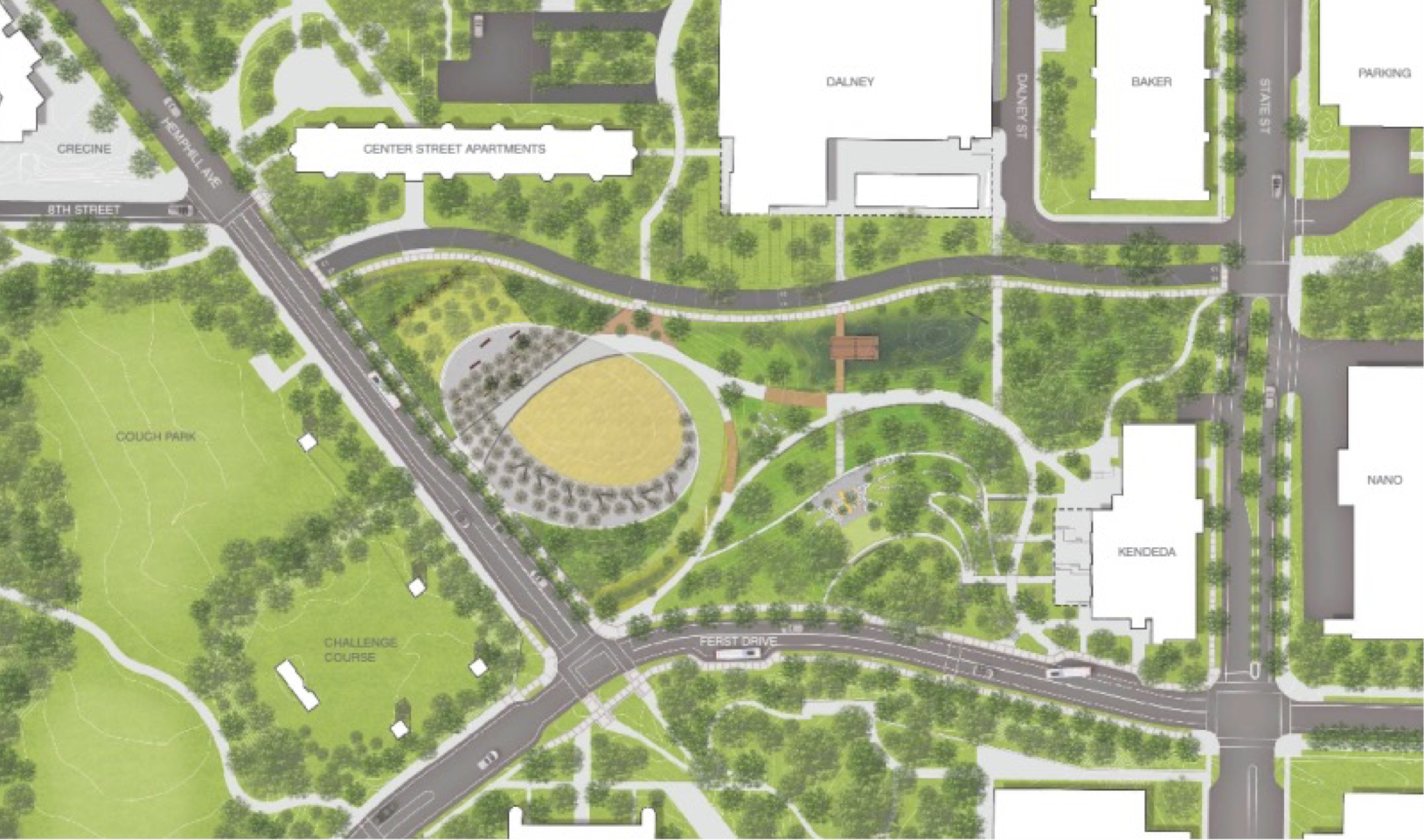
A lush green space will soon emerge from what was formerly the Beringhause Building and two surface parking lots. This renewal project will be purposely located due west of The Kendeda Building and will complement the regenerative principles of the Living Building Challenge.
The northwest sector of campus has been a continuous hub of activity with the construction of the new Georgia Tech Police Department Building, the Dalney Building, and the Kendeda Building for Innovative Sustainable Design — all of which opened their doors in the past few months. The next highly anticipated project in this area is the renewal of 8 acres of land located at the corner of Hemphill Avenue and Ferst Drive, which will extend and enhance the campus Eco-Commons.
A lush green space will soon emerge from what was formerly the Beringause Building and two surface parking lots. This renewal project will be purposely located due west of The Kendeda Building and will complement the regenerative principles of the Living Building Challenge.
Georgia Tech’s overall Eco-Commons project envisions 80 acres of green spaces throughout campus that follow what were the original, naturally occurring stream paths of this region before urbanization. These revitalized green spaces are being designed and engineered to reduce stormwater runoff by 50%, while also supporting increased living learning labs and biodiversity on campus.
This particular section will mimic a traditional piedmont woodland that was located on campus before the city grew up around it. Currently, the majority of acreage is covered by oak, pine, and hickory trees along with crepe myrtles and redbuds. The trees have been surveyed and range from specimen trees (those with high historic or ecological value), to trees in fair or poor condition.
According to Jason Gregory, senior planner in Capital Planning and Space Management, more than 60 trees will be temporarily relocated to the tree farm by the Roger A. and Helen B. Krone Engineered Biosystems Building while significant grading of the space is completed.
“It’s pretty neat that we have the ability to relocate these trees on campus while this project moves forward,” explained Gregory.
But before planting can begin at the site, extensive amendments such as compost and biochar will be added to the soil. Installation of utilities, water infiltration cells, and drainage infrastructure will also take place before any planting can begin.
After the site is prepared, more than 600 new trees will be planted in addition to the relocated trees. This increased tree canopy will support a display of perennials such as flowering dogwood, yellow daisies, and ferns. This recreated piedmont woodland will feature a grove of tupelo trees, a prairie-like area of grasses, a manicured lawn, a granite outcropping, and seepage wetlands. It is expected that by mid-year 2020, students, faculty, and staff will be able to meander the walkways and bridges and enjoy the natural beauty of this revitalized sector of campus.
The creation of this performance landscape helps demonstrate Georgia Tech’s thoughtful stewardship of land development by including smart infrastructure to facilitate a balanced flow of stormwater. In addition, this naturalized ecological and educational environment supports Georgia Tech’s commitment to fostering sustainability initiatives well into the 21st century.
To learn more about this distinctive campus initiative, stay tuned for the next article in a three-part series.